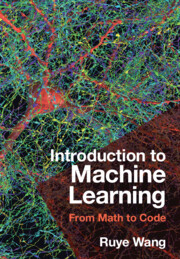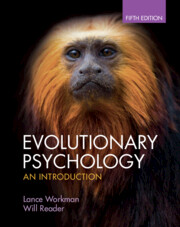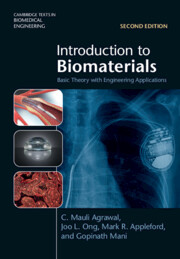Refine search
Actions for selected content:
3387951 results

Teaching Shakespeare’s Theatre of the World
- Coming soon
-
- Expected online publication date:
- November 2025
- Print publication:
- 30 November 2025
-
- Element
- Export citation

Introduction to Machine Learning
- From Math to Code
- Coming soon
-
- Expected online publication date:
- November 2025
- Print publication:
- 30 November 2025
-
- Textbook
- Export citation

Statistics for Chemical Engineers
- From Data to Models to Decisions
- Coming soon
-
- Expected online publication date:
- November 2025
- Print publication:
- 25 September 2025
-
- Textbook
- Export citation

Evolutionary Psychology
- An Introduction
- Coming soon
-
- Expected online publication date:
- November 2025
- Print publication:
- 09 October 2025
-
- Textbook
- Export citation
Glossary
-
- Book:
- Kant: Critique of Pure Reason
- Published online:
- 12 September 2025
- Print publication:
- 06 November 2025, pp 718-735
-
- Chapter
- Export citation
Frontmatter
-
- Book:
- Kant: Critique of Pure Reason
- Published online:
- 12 September 2025
- Print publication:
- 06 November 2025, pp i-viii
-
- Chapter
- Export citation
Introduction, by Paul Guyer and Allen W. Wood
-
- Book:
- Kant: Critique of Pure Reason
- Published online:
- 12 September 2025
- Print publication:
- 06 November 2025, pp 1-44
-
- Chapter
- Export citation

Linear Cryptanalysis
- Coming soon
-
- Expected online publication date:
- November 2025
- Print publication:
- 30 November 2025
-
- Book
- Export citation

Being Human in the Digital World
- Interdisciplinary Perspectives
- Coming soon
-
- Expected online publication date:
- November 2025
- Print publication:
- 30 November 2025
-
- Book
- Export citation
Editorial Notes
-
- Book:
- Kant: Critique of Pure Reason
- Published online:
- 12 September 2025
- Print publication:
- 06 November 2025, pp 669-717
-
- Chapter
- Export citation

Labor Unions and Democratic Unrest in North Africa
- Protest and Resistance in Tunisia and Morocco
- Coming soon
-
- Expected online publication date:
- November 2025
- Print publication:
- 30 November 2025
-
- Book
- Export citation

Seekers and Partisans
- Americans Abroad in the Crisis Years, 1935–1941
- Coming soon
-
- Expected online publication date:
- November 2025
- Print publication:
- 30 November 2025
-
- Book
- Export citation

Introduction to Biomaterials
- Basic Theory with Engineering Applications
- Coming soon
-
- Expected online publication date:
- November 2025
- Print publication:
- 30 November 2025
-
- Textbook
- Export citation
Contents
-
- Book:
- Kant: Critique of Pure Reason
- Published online:
- 12 September 2025
- Print publication:
- 06 November 2025, pp ix-x
-
- Chapter
- Export citation
Immanuel Kant, Critique of Pure Reason
-
- Book:
- Kant: Critique of Pure Reason
- Published online:
- 12 September 2025
- Print publication:
- 06 November 2025, pp 45-668
-
- Chapter
- Export citation

Parallel Computer Organization and Design
- Coming soon
-
- Expected online publication date:
- November 2025
- Print publication:
- 09 October 2025
-
- Textbook
- Export citation
General Editors’ Preface
-
- Book:
- Kant: Critique of Pure Reason
- Published online:
- 12 September 2025
- Print publication:
- 06 November 2025, pp xi-xiii
-
- Chapter
- Export citation
Acknowledgments
-
- Book:
- Kant: Critique of Pure Reason
- Published online:
- 12 September 2025
- Print publication:
- 06 November 2025, pp xiv-xvi
-
- Chapter
- Export citation
The Joy of Love in the Middle Ages
- A European Literary History
- Coming soon
-
- Expected online publication date:
- November 2025
- Print publication:
- 30 November 2025
-
- Book
- Export citation

In Defense of Economic and Social Human Rights
- An Intellectual History, 1940 to the Present
- Coming soon
-
- Expected online publication date:
- November 2025
- Print publication:
- 30 November 2025
-
- Book
- Export citation
